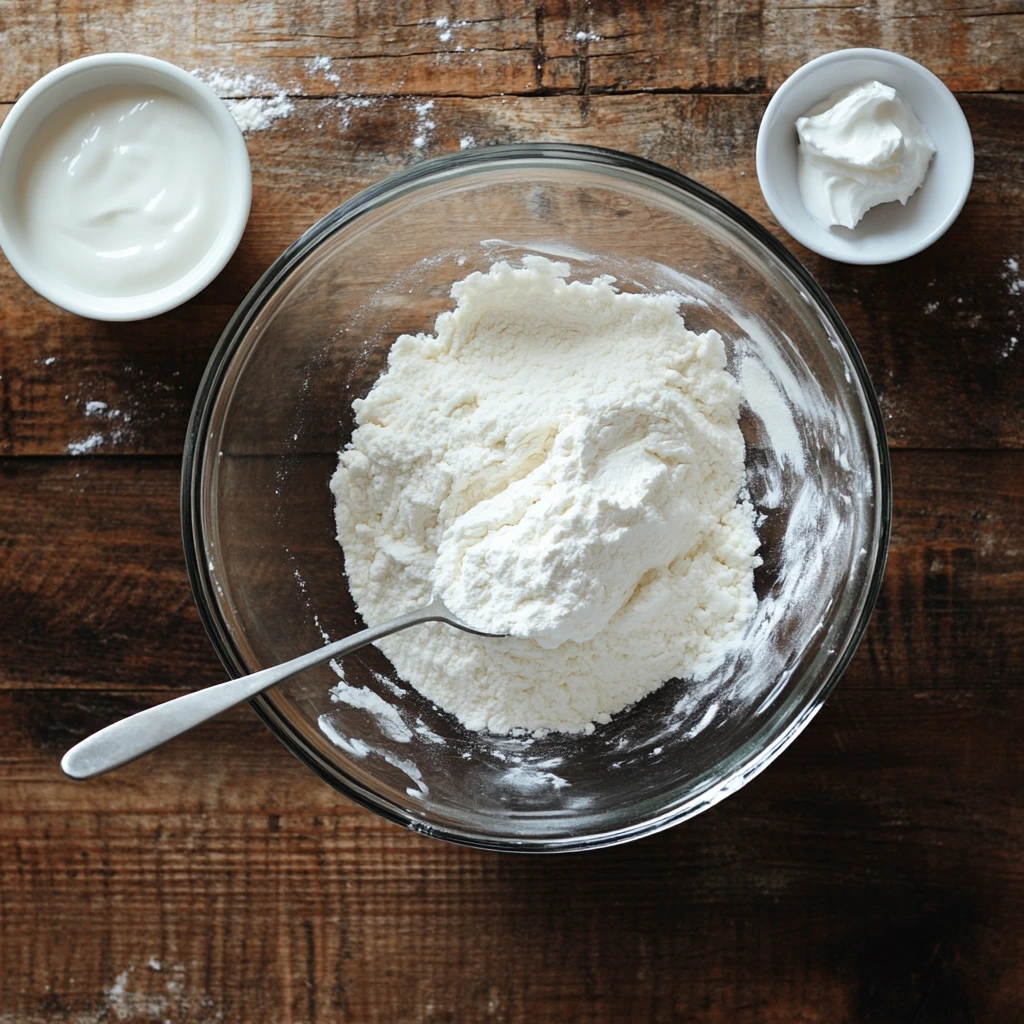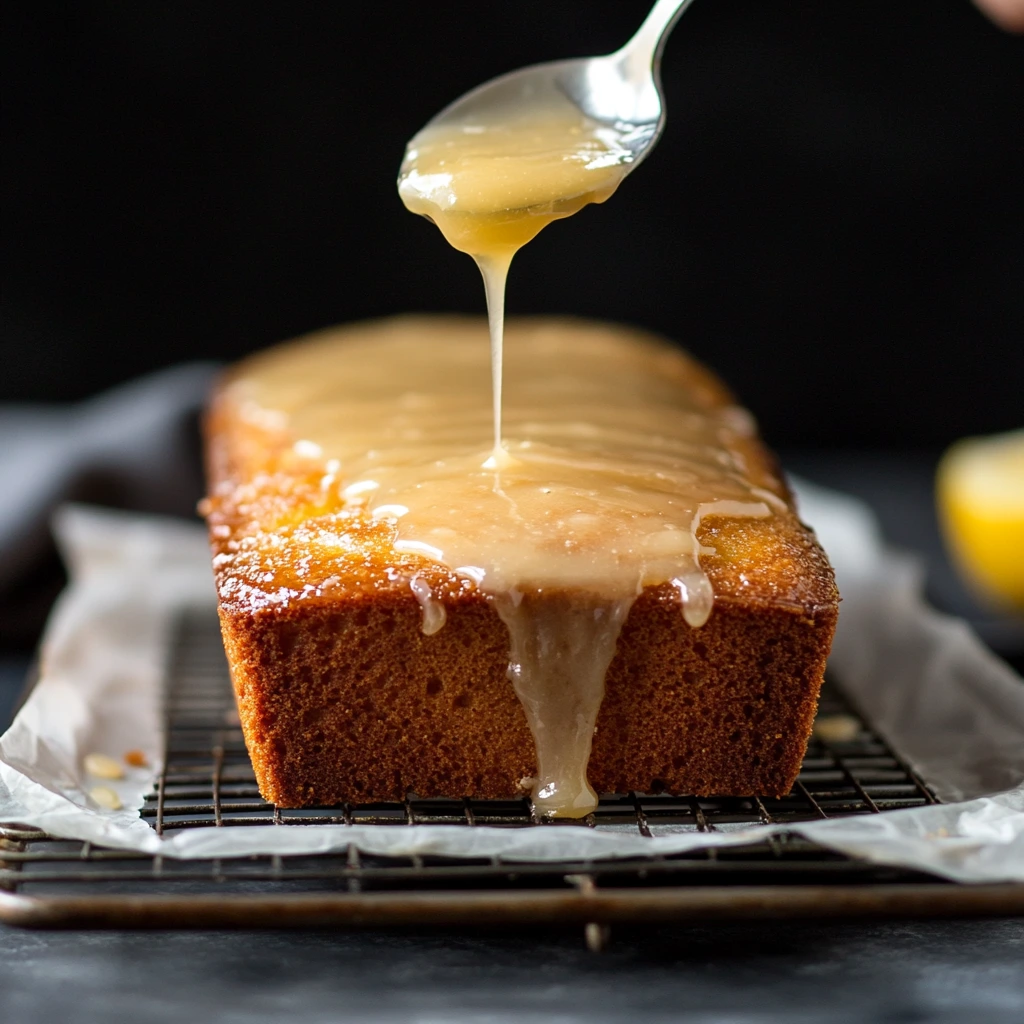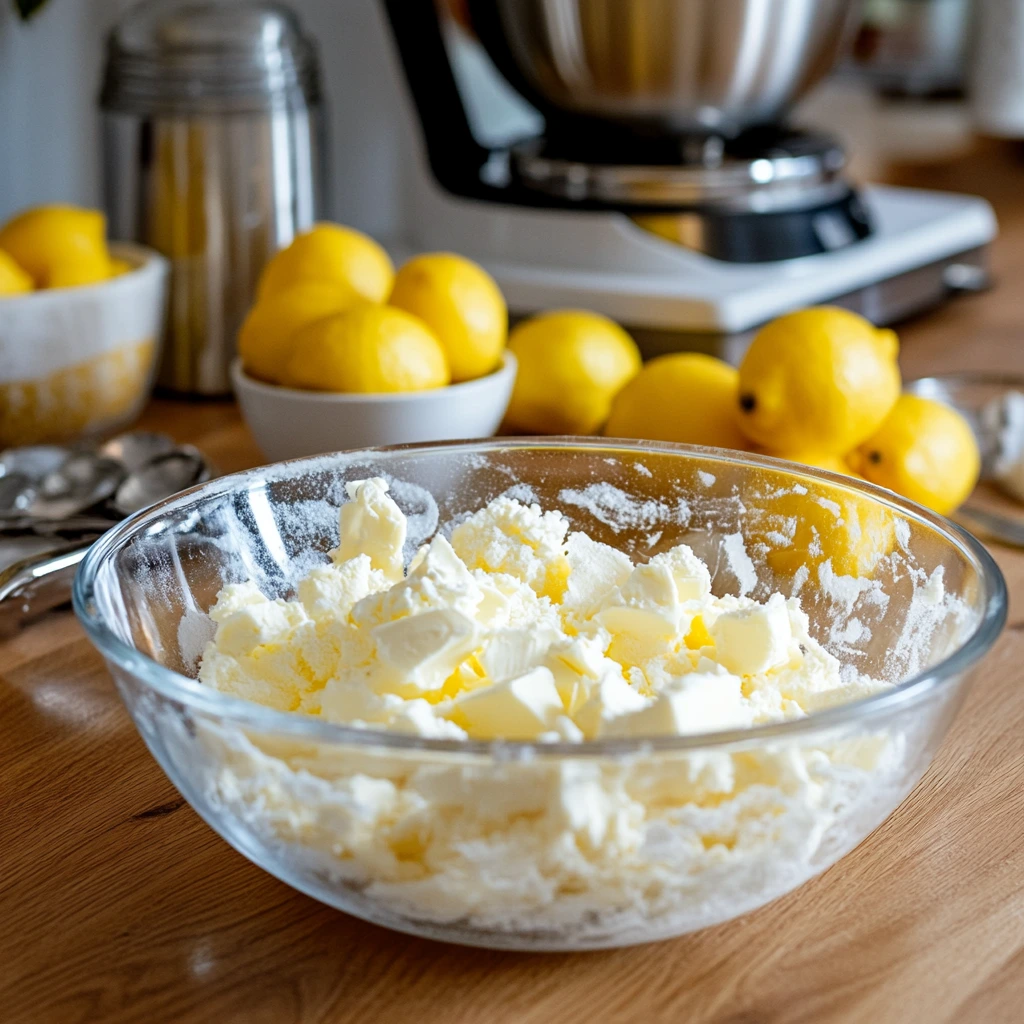If there’s one dessert that never fails to brighten a day, it’s a classic lemon cake. And this one? Oh, it’s next level. It’s tender, sunshine-filled, and the kind of dessert that just makes you feel happy. I call it A Lemon Cake to Die For because honestly, every bite is that good.
This cake has everything you want in a lemon dessert—it’s light yet rich, sweet with just the right amount of tang, and topped with a silky glaze that brings everything together beautifully. Whether you’re hosting a brunch, need a pick-me-up during the week, or just want to bake something that feels a little extra special, this lemon cake delivers.
I first made this on a gray afternoon when I was craving something bright and fresh. The scent of fresh lemon zest filling the kitchen? Instantly uplifting. And after that first bite—moist, citrusy, and with that buttery crumb—I knew it was going to be a staple in my baking rotation. It’s the kind of cake you bring to a potluck and everyone asks for the recipe. It’s also the kind of cake you might “accidentally” eat three slices of before dinner. No judgment. We’ve all been there.
Let’s break it down and get this dreamy lemon cake in the oven.
Ingredients You’ll Need
For the cake:
1 1/2 cups all-purpose flour
1 tsp baking powder
1/2 tsp baking soda
1/4 tsp salt
1 cup granulated sugar
1/2 cup unsalted butter, softened
2 large eggs, room temperature
Zest and juice of 2 lemons (about 2–3 tbsp zest and 1/4 cup juice)
1/2 cup plain Greek yogurt (or sour cream/buttermilk)
1 tsp vanilla extract
For the lemon glaze:
1 cup powdered sugar
2–3 tbsp fresh lemon juice
Optional: 1/2 tsp lemon zest for garnish
STEP 1: PREP YOUR PAN AND OVEN
Start by preheating your oven to 350°F (175°C). Lightly grease and flour a standard loaf pan, or line it with parchment paper if you want a super easy release. I love using parchment because you can just lift the whole cake out once it’s cooled—zero sticking, zero stress.
STEP 2: MIX YOUR DRY INGREDIENTS
In a medium bowl, whisk together the flour, baking powder, baking soda, and salt. Set that aside. This simple mix is going to give you the perfect rise and crumb—light, but not crumbly. The combo of baking soda and powder ensures we get that ideal texture.
STEP 3: CREAM THE BUTTER AND SUGAR
In a large mixing bowl, beat together the softened butter and granulated sugar. This step takes about 2–3 minutes, and it’s totally worth the extra time. You’re looking for a light and fluffy texture here—this is what gives the cake that soft, tender bite.

STEP 4: ADD THE EGGS, LEMON, AND VANILLA
Add your eggs one at a time, making sure each one is fully incorporated before adding the next. This helps the batter stay smooth and emulsified. Once the eggs are in, stir in that fragrant lemon zest, fresh lemon juice, and a splash of vanilla extract. Trust me, your kitchen is going to smell amazing right about now.
STEP 5: ALTERNATE DRY INGREDIENTS AND YOGURT
Now, let’s bring everything together. Gradually add your dry ingredients to the wet, alternating with the Greek yogurt. Do this in three parts—starting and ending with the dry mix. Stir just until combined after each addition. Don’t overmix! Overmixing can make your cake tough, and nobody wants that.

STEP 6: POUR AND BAKE
Pour the batter into your prepared loaf pan and smooth the top with a spatula. Give the pan a gentle tap on the counter to release any trapped air bubbles—this helps prevent weird pockets in the cake.
Pop it in the oven and bake for 50–60 minutes. You’ll know it’s done when a toothpick inserted into the center comes out clean. Let the cake cool in the pan for about 10 minutes before transferring it to a wire rack to cool completely.
The Dreamiest Lemon Glaze and Must-Know Tips for the Perfect Cake
Now that your lemon cake is out of the oven and cooling, we’re entering my favorite part—the glaze. This is where all that citrus flavor gets kicked up a notch. A good glaze can take a simple loaf from “nice” to “whoa, what bakery did you get this from?” And the best part? It’s ridiculously easy to make.
If you’ve never made a lemon glaze before, don’t worry. It’s as simple as whisking a few ingredients together, and it turns your cake into a total showstopper. That drizzle down the sides? Pure joy.
STEP 7: WHIP UP THE LEMON GLAZE
While your cake is cooling, grab a small bowl and whisk together:
1 cup powdered sugar
2 to 3 tablespoons of fresh lemon juice
Start with 2 tablespoons of juice and see how the consistency feels. If you want a thinner glaze that really soaks in and drips nicely, go with more lemon juice. If you prefer something a little thicker that sits on top, use less. You can also add 1/2 teaspoon of lemon zest here for a little extra zing—it gives a pop of flavor and looks pretty.
Once the cake has cooled completely (don’t rush this or the glaze will melt right off), drizzle it slowly over the top. Let it run naturally over the edges—imperfections here are beautiful.
STEP 8: DRESS IT UP (OPTIONAL, BUT FUN)
This part is totally up to you, but here are a few fun ways to dress up your lemon cake:
Extra lemon zest: Sprinkle it over the glaze for a pop of color and flavor.
Fresh berries: Raspberries or blueberries look beautiful on top or on the side of each slice.
A dusting of powdered sugar: Great if you want a lighter touch than a full glaze.
You can also serve this with a dollop of whipped cream or even a scoop of vanilla ice cream if you’re going all out. And honestly, this cake can absolutely hold its own with just a cup of coffee or tea.
Helpful Tips for the Best Lemon Cake Every Time
After making this cake more times than I can count (seriously, it’s a weekend favorite around here), I’ve picked up a few little tricks that make a big difference:
Use room temperature ingredients: This helps everything mix together more smoothly and evenly. Cold butter and eggs can lead to a lumpy batter.
Don’t overmix: Once the flour is in, be gentle. Overmixing develops the gluten too much and can make your cake tough instead of tender.
Test with a toothpick: If you’re unsure if the cake is fully baked, stick a toothpick in the center. If it comes out clean or with just a few crumbs, it’s ready. If it’s wet, give it another few minutes and check again.
Let it cool before glazing: I know it’s tempting to glaze it right away, but if the cake is warm, your glaze will just melt into it and disappear. Let it cool completely for the best results.
Store it properly: This cake keeps beautifully at room temperature for two days, or in the fridge for up to five. I actually love how it tastes the next day—it gets even more flavorful.
Variations to Try Next Time
If you’ve fallen in love with this cake (and you probably will), here are a few ways to switch things up:
Lemon-Blueberry Loaf: Gently fold 1/2 cup of fresh or frozen blueberries into the batter before baking. Toss them in a bit of flour first to keep them from sinking.
Lemon-Poppy Seed Twist: Add 1 tablespoon of poppy seeds for a classic combo.
Citrus Blend: Use a mix of lemon, lime, and orange zest for a more complex citrus flavor.
Gluten-Free Option: Swap the all-purpose flour for your favorite 1:1 gluten-free baking blend.
Lemon Cake FAQ and Final Thoughts
As much as I love sharing recipes, I know the real magic happens when you start baking in your own kitchen. And if you’re anything like me, questions start popping up before the oven even finishes preheating. So let’s get ahead of the game. I’ve rounded up some of the most common questions I’ve received about this lemon cake—plus a few personal tips to make sure your baking goes off without a hitch.

Frequently Asked Questions
1. Can I use bottled lemon juice instead of fresh?
Technically, yes—but I really don’t recommend it. Fresh lemon juice brings a brightness that bottled just can’t match. Since lemon is the star of this cake, go with fresh if you can.
2. What if I don’t have Greek yogurt?
No problem! You can substitute sour cream or buttermilk. All three options add moisture and that lovely tangy flavor. Just keep the amount the same.
3. Can I make this cake in a different type of pan?
Yes, you can use a standard 8-inch round or square cake pan, or even make cupcakes. Just adjust the baking time—start checking cupcakes at around 18–22 minutes and cakes at about 30–40 minutes depending on the pan.
4. My cake sunk in the middle. What went wrong?
This could be from underbaking, overmixing, or using too much leavening. Be sure to follow the recipe closely, especially with measurements and oven temperature. And always test with a toothpick before pulling it out of the oven.
5. How do I store leftovers?
Once the cake has completely cooled and the glaze has set, wrap it tightly in plastic wrap or store in an airtight container. It keeps well at room temp for up to 2 days, or in the fridge for up to 5 days. You can also freeze it (unglazed) for up to 2 months.
6. Can I double the recipe?
Absolutely. Just double all ingredients and use two loaf pans or a larger bundt or sheet pan. Keep an eye on baking time—it may need a little longer depending on the size and depth of your pans.
7. How do I make the glaze thicker or thinner?
Simple—add more powdered sugar to thicken or more lemon juice to thin. Start small with your adjustments so you don’t overdo it.
Final Thoughts
There’s something really special about baking from scratch. It slows you down, fills your kitchen with warmth (and amazing smells), and gives you something to share with the people you love. This lemon cake, with its perfect balance of sweetness and citrus, is one of those recipes that brings joy in every bite.
Whether you’re making it for a quiet weekend treat, a sunny brunch with friends, or just because you had a couple lemons begging to be used, I hope this becomes one of those go-to recipes you reach for again and again.
And if you do give it a try, I’d love to hear how it turned out! Did you add berries? Go big with extra zest? Leave a comment below and let me know what you thought. Reader feedback always makes my day—and you just might inspire someone else to bake their own version of this cake to die for.
Print
A Lemon Cake to Die For
- Author: Andrew Recipes
Description
This lemon cake is bright, moist, and intensely flavorful—exactly what you’d expect from a dessert made to impress. The cake is enriched with Greek yogurt for extra tenderness and tang, while fresh lemon zest and juice deliver a bold citrus punch. Topped with a silky lemon glaze, it’s the kind of treat that feels like sunshine in every bite.
Ingredients
For the cake:
1 1/2 cups all-purpose flour
1 tsp baking powder
1/2 tsp baking soda
1/4 tsp salt
1 cup granulated sugar
1/2 cup unsalted butter, softened
2 large eggs, room temperature
Zest and juice of 2 lemons (about 2–3 tbsp zest and 1/4 cup juice)
1/2 cup plain Greek yogurt (or sour cream/buttermilk for extra moisture)
1 tsp vanilla extract
For the lemon glaze:
1 cup powdered sugar
2–3 tbsp fresh lemon juice
Optional: 1/2 tsp lemon zest for extra zing
Instructions
Preheat your oven to 350°F (175°C). Grease and flour a loaf pan or line it with parchment paper for easy release.
In a medium bowl, whisk together the flour, baking powder, baking soda, and salt. Set aside.
In a large mixing bowl, beat the softened butter and sugar together until light and fluffy, about 2–3 minutes.
Beat in the eggs one at a time, ensuring each egg is fully incorporated before adding the next. Stir in the lemon zest, lemon juice, and vanilla extract.
Gradually add the dry ingredients to the wet ingredients in three parts, alternating with the Greek yogurt. Begin and end with the dry ingredients, mixing just until combined after each addition. Do not overmix.
Pour the batter into the prepared loaf pan and smooth the top with a spatula. Tap the pan gently on the counter to release air bubbles. Bake for 50–60 minutes, or until a toothpick inserted into the center comes out clean. Let the cake cool in the pan for 10 minutes before transferring it to a wire rack to cool completely.
In a small bowl, whisk together the powdered sugar and lemon juice until smooth. Add more lemon juice for a thinner glaze or more sugar for a thicker consistency. Drizzle the glaze over the cooled cake, allowing it to drip down the sides. Sprinkle with additional lemon zest if desired.
Slice and serve with a dollop of whipped cream, a scoop of vanilla ice cream, or fresh berries if desired.
Notes
This cake keeps well at room temperature for up to 2 days or in the refrigerator for up to 5 days. For an extra-lemony experience, poke small holes in the cake with a skewer before glazing to let the citrus soak in. Ideal for brunches, tea time, or a sweet afternoon pick-me-up.



